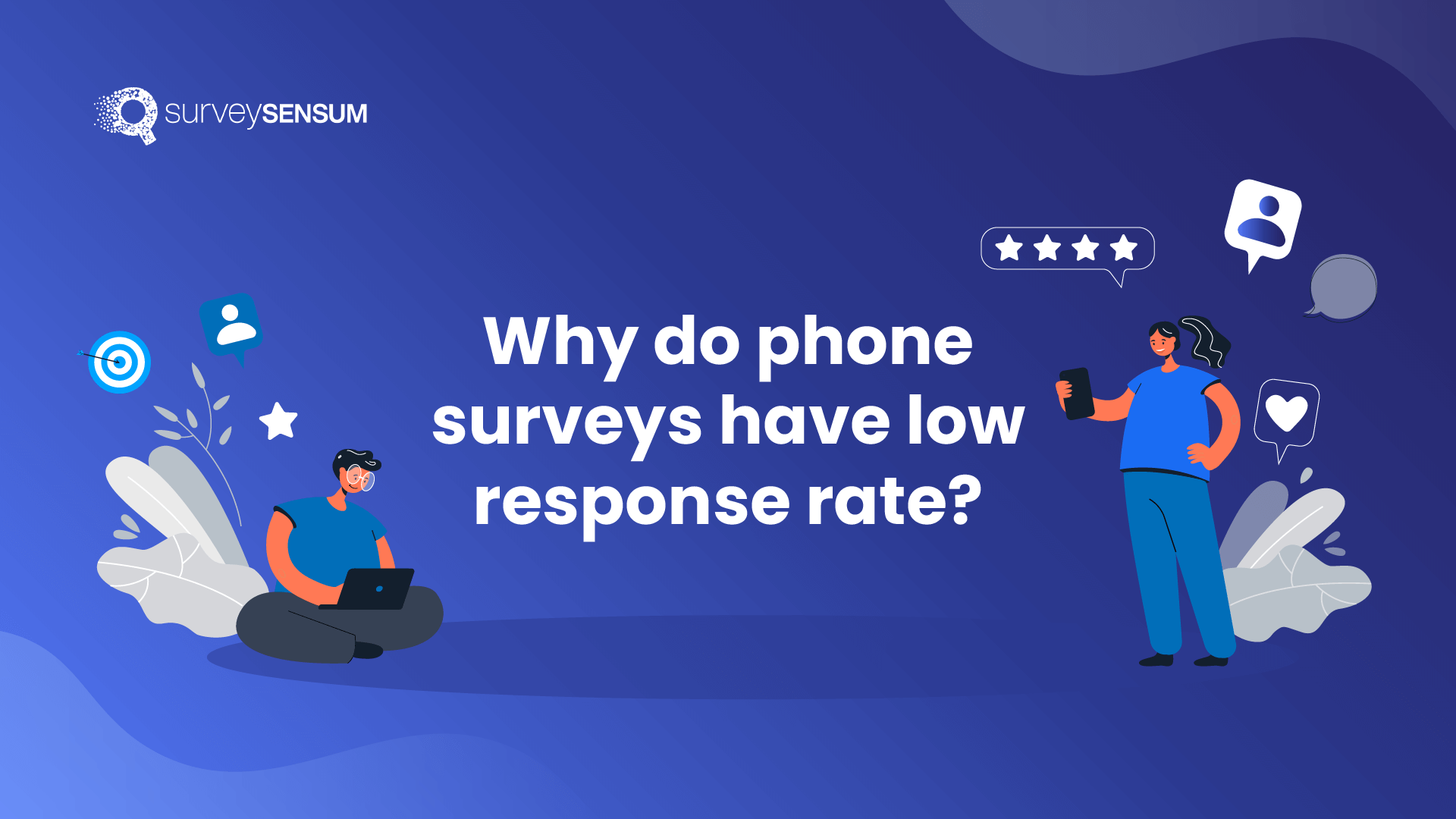9 Ways to Improve NPS Response Rates
Read More

Since the beginning, marketers, researchers, and businesses relied heavily on telephone surveys to interview people to gather and understand customer feedback. They used CATI/ phone surveys to gather insights about the customer challenges, expectations, and behaviors to launch or improve products and services in the market.
CATI (Computer Assisted Telephone Interviewing) or phone survey is a method where an interviewer uses a script on his computer screen to interview or collect responses from a participant or a customer over the telephone. They may take the call from a computer or use a separate phone while being assisted by a computer.
They recorded all the responses within the computer to save time transferring data from paper to digital format. Yet, the issue was that they had to wait for a long time until they collected a certain number of responses. And not just that, they had to dedicate a team to compile all these responses manually and prepare reports.
It was widely used in the past as respondents did not need a computer to respond to the questionnaire but only a telephone. Organizations used CATI/ phone surveys to promote materials, understand customer satisfaction, introduce new products and services, etc.
Yet, we witnessed the rapid downfall of CATI/ phone surveys since 2000 as more and more innovative and appealing methodologies were introduced. The response rate went too low, and CATI surveys became more challenging and tedious in the next couple of years.
But, why?
Call disruptions, call forwarding to the voicemails, difficulty connecting with the right person in case of an organization, misunderstanding or misrepresentation of data or speech, and the introduction to quick and simple online surveys had been some of the reasons why CATI surveys started getting low response rates.
And online surveys gained sudden momentum as they are far more appealing and easy to complete compared to the CATI/ phone surveys. Besides, they are cost-effective, more accurate, less prone to mistakes, easy to execute and analyze, quickly shareable, and comes with visually pleasing elements and style.
But what were the actual problems with CATI/ phone surveys, the reasons behind low response rates, and how do digital surveys replace CATI surveys?
Let’s start with understanding the challenges of phone surveys.
Though a widely used survey model, CATI/ phone surveys have several issues that caused them to fade out in the digital era. Here are some of them.
Yes, there are many limitations to the phone surveys, the low response rate being the most critical. Because if you dont get responses, how will you get the required data?
The decline in the phone response rates wasn’t anything sudden. It happened gradually. According to studies, it only took 7 years for a 41% fall in the response rates.
But why?
Here are some of the reasons why CATI surveys are getting low response rates of CATI surveys.
Now that respondents are not responding to the CATI/ phone surveys, what is the alternative?
Online surveys.
The limitations of phone surveys in the modern era, including the declining popularity of landline service prompt users to switch to online surveys. And not just that, online surveys’ flexibility and ease of use take them far ahead of CATI/ phone surveys.
Try Online Surveys with SurveySensum →
SurveySensum is an enterprise customer feedback platform that helps automotive, healthcare, BFSI, and telecom sectors improve their customer satisfaction. It helps you gather, analyze, and take action on real-time customer feedback across journey touchpoints and boosts customer satisfaction.
Companies such as Daimler (Mercedes-Benz), Honda (Astra), and Nissan (Indomobil) in Indonesia have replaced CATI/ phone surveys with online surveys and have improved their customer satisfaction by 40% with their SSI and CSI surveys.
And Manulife Indonesia increased its overall NPS by 5 points by launching CSAT surveys after every transaction online throughout the customer journey and taking action on the real-time insights received.
Here are some of the reasons how SurveySensum is helping organizations boosts customer satisfaction score, increases response rate, and improves NPS score.
So, when you get real-time feedback from your respondents, you can take action in time, closing the feedback loop and enhancing their experiences with you.
